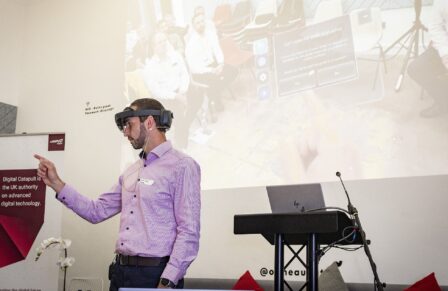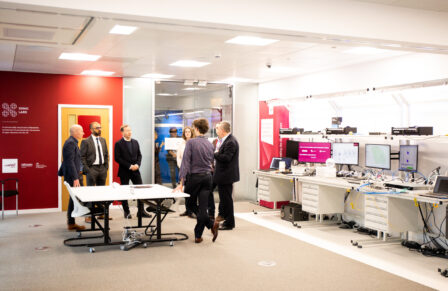Open RAN Principles Explained – SONIC Labs guest blog
Posted 20 Oct 2022
Open RAN Principles Explained – SONIC Labs guest blog
This is a guest blog for Digital Catapult from Dr Eleanor Russell, R&D Lead, Diversification Strategy Unit at Department for Digital, Culture, Media and Sport (DCMS)
Although Open RAN architecture is already being deployed, from Japan, to the UK, to the US, the exact nature of Open RAN remains disputed. Without a clear definition, there is a risk that Open RAN may be developed in a way that doesn’t fully enable its potential benefits, and inhibit a truly competitive market.
As the digital space comes to underline all aspects of our lives, its supply – the underlying infrastructure – also becomes crucial. At the same time, the number of vendors supplying the market has contracted significantly, raising concerns in several countries about the resilience and security of these critical systems.
The UK government has identified Open RAN as a key element of driving diversification. As such, there is a clear incentive to determine the characteristics of Open RAN necessary to achieving these objectives. In March 2022, DCMS published the Open RAN Principles to this end:
- Open disaggregation, allowing elements of the RAN to be sourced from different suppliers and implemented in new ways.
- Standards-based compliance, allowing all suppliers to test solutions against standards in an open, neutral environment.
- Demonstrated interoperability, ensuring disaggregated elements work together as a fully functional system — at a minimum matching the performance and security of current solutions.
- Implementation neutrality, allowing suppliers to innovate and differentiate on the features and performance of their products.
The role of SONIC Labs
Although industry progress is promising, today’s Open RAN products and specifications do not yet fully match the principles set out above. Achieving them requires collaboration across industry and between countries, working together to develop and deliver truly interoperable, secure systems. In particular, the Principles highlight how neutral testing environments are essential to developing and demonstrating interoperable tech for all parts of the RAN.
As a neutral test lab, SONIC Labs plays a crucial role in ensuring that new and evolving Open RAN products develop in line with the principles. By providing a neutral lab environment, SONIC Labs gives suppliers – especially SMEs and recent entrants to the UK market – access to testing to demonstrate that their products meet the industry requirements. SONIC Labs also encourages companies to work together to ensure that products are interoperable by default. Digital Catapult also has links to government funding and can provide advice on public-sector support for companies looking to ensure that their products will suffice.
What the Principles mean for industry
By setting a framework for Open RAN architectures within the UK ecosystem, the government is giving industry a clear ‘north star’ to work towards when developing interoperable technologies.
Since the Principles were launched, they have received support from across industry, most recently the Open RAN Policy Coalition. In the long term, the UK government is working to build on this early success and properly embed them in widespread open architectures within the 5G era – helping Open RAN to reach its full potential to diversify networks and create greater resilience and security in our networks.
About SONIC Labs
Funded by DCMS, SONIC Labs is a programme from Digital Catapult and Ofcom to allow new solution providers to enter the telecoms supply chain in the UK. It will drive forward the rollout of Open RAN, which enables mobile networks to be built using a variety of different equipment suppliers. Register your interest in SONIC Labs or find out more about the latest open call here.






